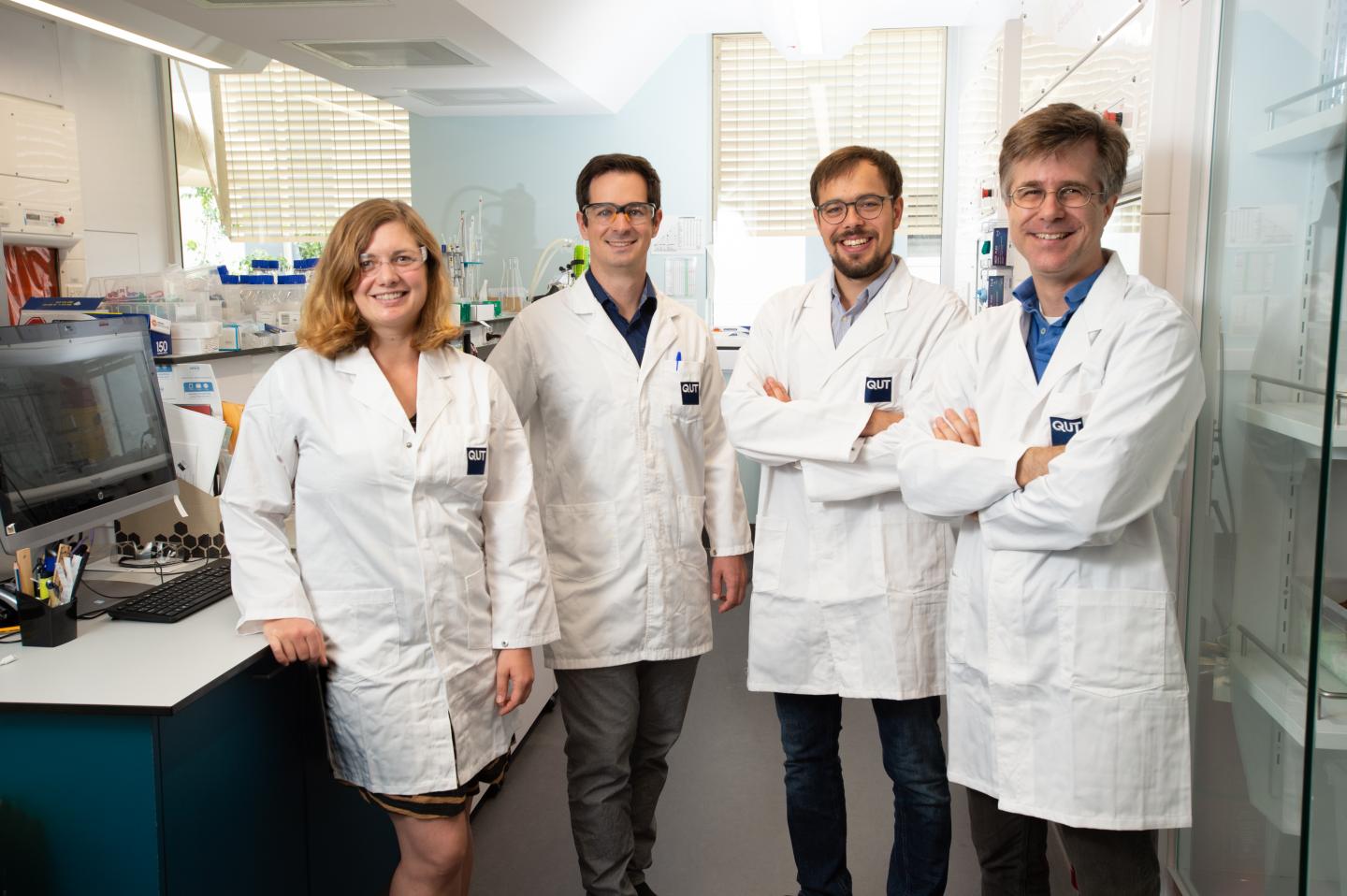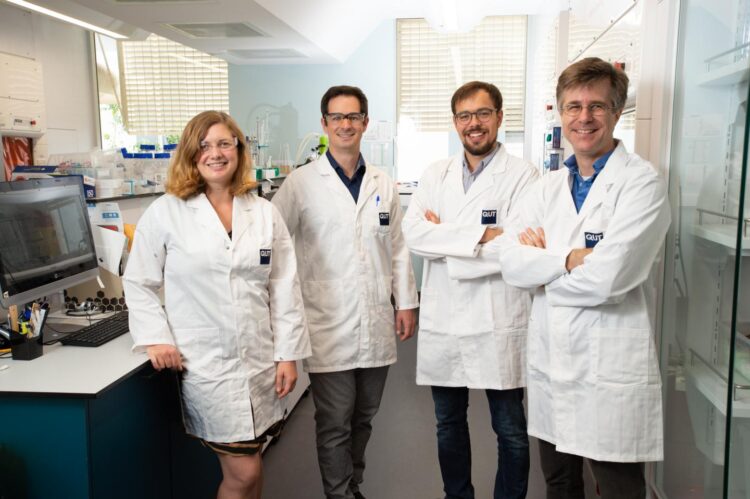
Credit: QUT
Scientists frequently look at how molecules behave in nature to help them design chemical processes, and that’s what Queensland University of Technology (QUT) and Ghent University researchers did to create a green light-stabilised 3D polymer structure that unfolds itself when left in darkness.
The team has reported on this world-first example of a reversible, light-triggered process to fold polymers into single chain nanoparticles in the flagship journal of the Royal Society of Chemistry, Chemical Science.
The research was conducted by lead author and QUT PhD student Daniel Kodura, with QUT’s Australian Research Council (ARC) DECRA Fellow Dr Hendrik Frisch, Dr Anja Goldmann, PhD student Fabian Bloesser and ARC Laureate Fellow Professor Christopher Barner-Kowollik, from the Soft Matter Materials Laboratory in QUT’s Centre for Materials Science, in collaboration with Professor Filip Du Prez and Dr Hannes Houck from the Polymer Chemistry Research group at Ghent University, Belgium.
“What we have done is look to proteins, which are biological polymers that enable most of the chemistry in our bodies’ cells and are essential to life, and mimic with synthetic polymers one of the ways that proteins function,” Mr Kodura said.
Proteins are large complex molecules of amino acids that are connected to each other in long chains, and these chains naturally fold themselves, sometimes with a helper molecule, into a 3D structure that performs a function, like making your muscles move.
“What we did was use green LED light as the helper to fold synthetic polymer chains into a structure,” he said. “The light was the fuel for the process and, importantly, it also kept the structure stable. As long as the light was on, the structure held its shape. Without the light, in the dark and at room temperature, the structure relaxed and unfolded.”
“This has never been achieved before,” added Dr Frisch. “Also, folding the chains with light into a structure and then unfolding them in the dark could be successfully repeated several times.”
Professor Christopher Barner-Kowollik said the chemical process was “akin to a living process of its own”.
“Living organisms need to consume an energy source, like light, to survive and this 3D structure is the same. It consumes light as a fuel to maintain itself,” he said.
“This is an example of fundamental, instructive science. It shows what’s possible when you use the interplay of light and darkness for complex macromolecular designs.”
Dr Goldmann said while scientists have shown how to fold chemical substrates with light into a structure before “it’s always been permanently locked in. This is the first example of a truly light-stabilised 3D single-stranded polymer structure.”
The fundamental principle behind the chemical process is the same as team members used previously in creating what they have termed light-stabilised dynamic materials (LSDMs) – a new class of materials.
“What we previously created was something you can see and touch,” Professor Du Prez and Dr Houck said. “This is different and deals with transformations at the single chain level, meaning nanometre size which can be up to one-billionth of a metre, or 100,000 times smaller than a human hair.”
###
The full paper, Light-fueled dynamic covalent crosslinking of single polymer chains in non-equilibrium states, is available here:
https:/
Chemical Science has chosen the paper as its ChemSci Pick of the Week.
Media Contact
Karen Milliner
[email protected]
Original Source
https:/
Related Journal Article
http://dx.





